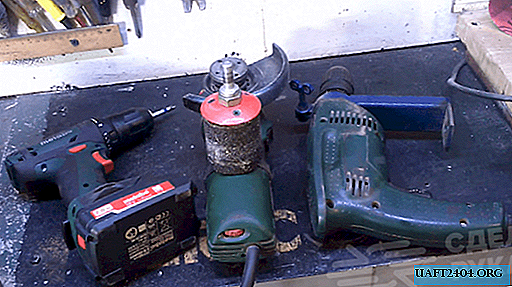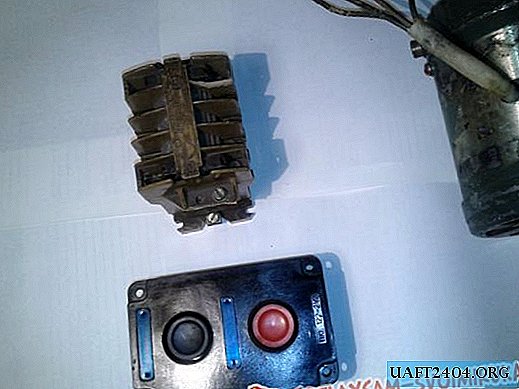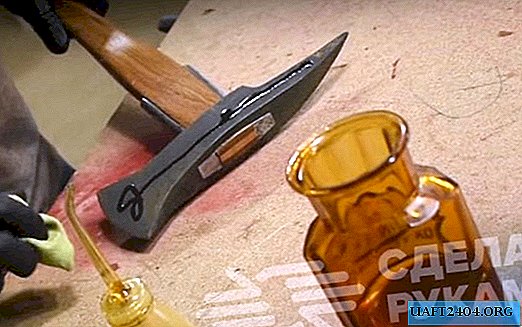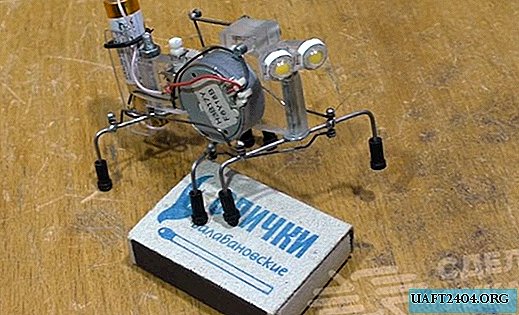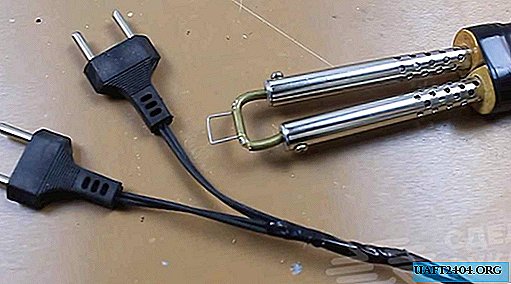Share
Pin
Tweet
Send
Share
Send

Self-checking the motor armature can easily be done at home. This will allow, firstly, to independently restore the tool’s performance, and secondly, not to overpay the specialist for a fairly simple operation. To check, you need only a screwdriver and a multimeter. In addition, you can purchase a special device for determining the inter-turn circuit.
Stage 1. Visual inspection of the instrument
Very often there are situations when the tool is still working, but not as it should be. And in 30% of cases, the burned anchor is to blame. This can be detected visually, even before opening the case.
Indirect signs of a "tired" motor armature are the following problems:
- With the electric motor running, very strong sparking is visible on the collector.
- When you try to start the grinder (drill, circular saw, etc.), a severe voltage drop is observed (lighting blinks).
- Starting the electric motor is accompanied by sharp jerks.
- A characteristic smell of burnt wiring is heard from the housing.
- The tool is not gaining its previous power.
Please note that more than half of these signs may also indicate commonplace wear on the motor brushes. If they are worn out or crumbled out, then the anchor, most likely, has nothing to do with it. We change for new ones, clean the collector from graphite deposits, and calmly work on. If the brushes look whole, and the above symptoms are observed, with an 80 percent probability it can be argued that the problem is in the anchor of the electric motor.
If the power tool does not show signs of life at all, there can be much more reasons, and not only the anchor test will be required.
Stage 2. Dismantling the power tool
One way or another, if everything is in order with the brushes, you can’t do without disassembling the tool. At this stage, the most important thing is not to harm even more. Particular attention should be paid to the correct selection of a screwdriver, since it will be problematic to unscrew the damaged screws, and the check will turn into painful locksmith work. Some tools use fasteners of different lengths. Their location needs to be remembered (it is better to record or sketch).
In order to successfully assemble a power tool after diagnosis and repair, it is recommended that beginners take pictures of each stage of disassembly. This will help a lot if you forget what part stood before the test.
Step 3. Preparing the motor armature for inspection
After the anchor has been removed from the hull, it is desirable to prepare it for diagnosis. The procedure consists in thoroughly cleaning the collector lamellas from graphite deposits. If this is not done, further verification may not give the desired result.
You can remove plaque with rags and alcohol. If the lamellas do not have plaque, but a thick layer of soot, it will have to be removed with fine-grained emery paper. Please note that there are no visible abrasive grooves on the collector. This will worsen the contact of the lamellas with the brushes, and also accelerate their wear.


Stage 4. Visual inspection of the anchor before checking
You need to look at the following:
- Collector lamels. They should not be heavily worn.
- Motor armature winding. We are looking for cliffs or visible signs of burning wire.
- Contacts. The entire winding is soldered to the collector lamellas. These points need to be checked for integrity.
If the collector is too deep, the anchor must be replaced. Traces of burning on the windings or contacts indicate that the part is defective. You can rewind, of course, but this is a thankless task, and requires special skills. It’s easier to buy a new one.
Stage 5. Checking the anchor with a multimeter
Checking the motor armature with a multimeter consists of two stages. First of all, you need to ring it for a breakdown. To do this, the multimeter is set to circuit test mode with an audio signal.

Next, with one probe, we pass through the collector lamellas, and with the second along the anchor body.

The second stage of checking the armature with a multimeter is to measure the resistances between adjacent windings. To do this, the device is set in the resistance determination mode to the very minimum threshold (as a rule, this is 200 Ohms).

Next, the probes are applied to adjacent collector lamellas, and the readings on the screen are fixed. When measuring the resistance, all adjacent lamellas should have the same value. If this is not the case, the anchor is defective.

About the same says a complete lack of resistance on any of the windings.
Step 6. Checking the armature for interturn closure
Before checking the motor armature for an inter-turn short circuit, it is necessary to acquire a special device. It costs a penny, and it is full of information on the Internet.
The essence of checking the anchor is to attach this device to all sections of the body. According to the readings of the LED indicator, a malfunction is determined.
Step 7. Replacing the armature and reassembling the tool
A faulty anchor is either rewound or replaced with a new one. Fortunately, today even the cheapest Chinese tool in online stores you can find the right accessories. It is advisable to check the new or restored anchor before installation according to the algorithm described above.
If everything is normal, we collect everything back and work. When changing the motor armature it is also recommended to install new brushes. Fortunately, they are cheap.
Share
Pin
Tweet
Send
Share
Send



